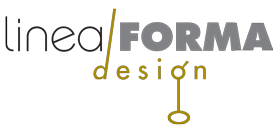Remember when Time Magazine printed a darkened version of OJ Simpson’s mug shot on their cover? The controversial image started a public discussion of journalistic ethics and also enlightened the public as to how photos can be subtly altered to manipulate the audience.
Of course, this is not a universal negative. Wedding photos are swathed in gaussian blurs and skin flaws are digitally eliminated in graduation photos. As a subject, we are happy to have some digital adjustments to our image.
In product photography, the majority of the time the end goal is to show a realistic image of the subject. Realistic does not mean untouched, however. There is generally color correction, adding/removing highlights and shadows, removing the background, creating a drop shadow or cast shadow, correcting flaws, and a myriad of other photo corrections.
But sometimes, through retouching techniques and filters, a more artistic version of the image is the goal. For the artist, changing the realistic image into the unreal image is where the fun is. And Photoshop is just the place to go to make that fun. One of my essential tools for too many years to remember, it has an almost limitless ability to manipulate the photographic image. And as amazing as its built-in tools are, it is also able to load third-party plug-ins. Some are complete apps in their own right and can take things to a whole new level.
On my recently completed laboratory products catalog, there were over 600 images used, almost all of them were shown realistically. The 128 pages were divided by their 10 product types. To introduce each catalog section I created a divider page, completely different from the technical, product pages. The divider pages feature single products shown much larger than life, zoomed in and cropped to bleed entirely off the edges of the page. So, for each divider page, I presented the client with three options (shown left to right below):
1. The full bleed image, shown sharp and clean,
2. The image after applying a third-party filter called “Tech Sketch” action (by Eugene-design), to give it a technical artist sketched look,
3. The image with two different effects applied: a very narrow depth-of-field filter to make a sharp, tight focused center of attention which quickly blurs outward, along with an HDR filter (both are filters from the NIK Collection by DXO) applied to the full image to increase the detail and tonal range in very specific ways.

Filters can change an image to be something entirely separate from the original. If the result is for a commercial purpose, then the perceived tone, image and message needs to be fully considered. “Edgy” works well in sporting goods and youth markets, while controlled and sharp might work better for technical audiences. In this real world example, the client initially loved the “tech sketch” look, but after seeing the divider pages in a full catalog proof, they realized it was just too “loose” for the extremely engineered laboratory products they produced. The tight depth-of-field filter combined with HDR filters did the trick. In fact, the HDR filter revealed details not visible in the original photos! Even though the photos still appear artistically modified, the effects enhance the strengths the company presents throughout the catalog. The results are a winner!
Share this:


8 Responses
travis giobbi
oh the P1000, where would I be without you and your vwr pipettes… Those six-well plates intimidate me, I have more fun with the 96-well
I’ve enjoyed watching this catalog evolve and become so much livelier than one might expect a medical plastics catalog to be. You and Labcon are such a perfect fit, such reciprocal respect.
bgob1
Thanks, T. Believe me, you inspire me. I’ll have a wrap-up on the catalog next month or two. Really turned out great.
Elisa Mills
Interesting and cool! Clearly, you have fun at work! Thanks for another good read, Bill.
bgob1
Thanks for reading it. I had lots of fun… and work! Keep checking back. B
Gayle
Another fabulous blog post. It’s a winner! They are all cool but I like the one on the right too. Whatever they are! Love the explanation. Damn Bill these are so fun to read! Love hearing how you think!
bgob1
And I love knowing you read them! Thanks.
Jan Morgan
Hooray for Pipettes and 6-well plates! Cheers!
bgob1
I’m more of a microcentrifuge tube guy myself, Jan. Hope you are doing well!